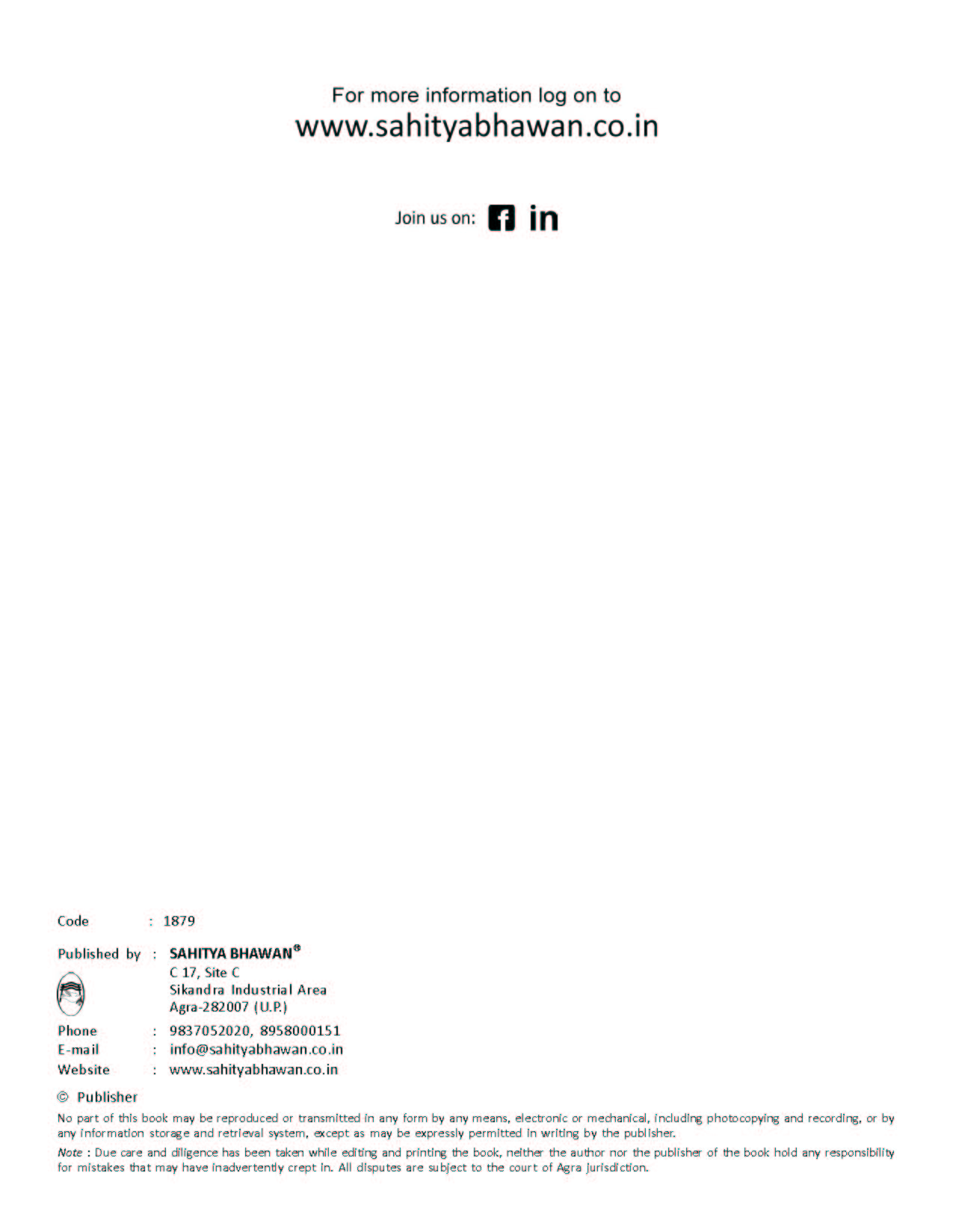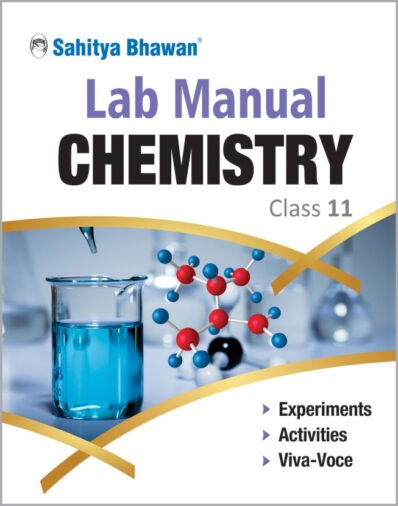Description
- Sahitya Bhawan Lab Manual with theory, Viva-voce Questions and Laboratory instruction for class 9, 10, 11, 12 has been prepared in accordance with the NCERT, CBSE, UP Board and other state boards syllabus.
- Practical book provides a better understanding of various concepts in a lucid manner.
- The entire matter is prepared in a way that it provides complete understanding of each topic.
- Viva-voice questions and answers helps the students in having a better understanding of concepts.
- Viva Voce questions are followed with answers.
- After theory matter, blank pages are provided for writing experiments.
- Lab Manual series contains Science, Mathematics, Social Science, Physics, Chemistry, Biology, Physical Education.
- Practical File | Practical file pdf ebook | State Board, Project work | How to write preface for a project | Latest Edition |State Board |Based on Ncert textbook |As per Ncert book | Ncert book questions |First class |Second class |Third class |Fourth class |Fifth class |Sixth class |Seventh class |Eight class |Ninth class |Tenth class |Eleventh class |Twelfth class |Worksheet | Book list |Hand writing book | Pdf dowanload (ebook).
Contents
General Introduction : Science and Physics Section : A Experiment No. 1
- (a) To measure diameter of a small/spherical cylindrical body(b) To measure internal diameter and depth of a given beaker/ calorimeter using Vernier Callipers andhence find its volume.
Experiment No. 2
- (a) To measure diameter of a given wire using screw gauge.
- (b) To measure thickness of a given sheet using screw gauge.
Experiment No. 3
- To determine volume of an irregular lamina using screw gauge.
Experiment No. 4
- To determine radius of curvature of a given spherical surface by a spherometer.
Experiment No. 5
- To determine the mass of two different objects using a beam balance.
Experiment No. 6
- To find the weight of a given body using parallelogram law of vectors.
Experiment No. 7
- Using a simple pendulum, plot its L-T2 graph and use it to find the effective length of seconds pendulum.
Experiment No. 8
- To study variation of time period of a simple pendulum of a given length by taking bobs of same size but different masses and interpret the result.
- Experiment No. 9
- To study relationship between force of limiting and normal reaction and to find the coefficient off riction between a block and a horizontal surface.
- Experiment No. 10
- To find the downward force along an inclined plane acting on a roller due to gravitational pull of the earth and study its relationship with the angle of inclination q by plotting between force and sin q.
- Activity no. 1 To make a paper scale of given least count, e.g., 0.2 cm, 0.5 cm.
- Activity No. 2 To determine mass of a given body using a metre scale by principle of moments.
- Activity No. 3 To plot a graph for a given set of data, with proper choice of scales and error bars.
- Activity No. 4 To measure the force of limiting friction for rolling of a roller on a horizontal plane.
- Activity No. 5 To study the variation in the range of a projectile with angle of projection.
- Activity No. 6 To study the conservation of energy of a ball rolling down on an inclined plane (using a double inclined plane).
- Activity No. 7 To study the dissipation of energy of a simple pendulum by plotting a graph between square of amplitude and time.
Section : BExperiment No. 1
- To determine Youngs modulus of elasticity of the material of a given wire.
Experiment No. 2
- To find the force constant of a helical spring by plotting a graph between load and extension.
Experiment No. 3
- To study the variation in volume with pressure for a sample of air at constant temperature by plotting graphs between P and V and between P and 1/V.
Experiment No. 4
- To determine the surface tension of water by using capillary rise method.
Experiment No. 5
- To determine the coefficient of viscosity of a given viscous liquid by measuring terminal velocity of a given spherical body.
Experiment No. 6
- To study the relationship between the temperature of a hot body and time by plotting a cooling curve.
Experiment No. 7
- To determine specific heat capacity of a given solid by method of mixtures.
Experiment No. 8
- To study the relation between frequency and length of a given wire under constant tension usinga sonometer.
Experiment No. 9
- To study the relation between the length of a given wire and tension for constant frequencyusing sonometer.
Experiment No. 10
- To find the speed of sound in air at room temperature using a resonance tube by two resonance positions.
- Activity no. 1 To observe the change of state and plot a cooling curve for molten wax.
- Activity No. 2 To observe and explain the effect of heating on a bi-metallic strip.
- Activity No. 3 To note the change in level of a liquid in a container on heating and interpret the observations.
- Activity No. 4 To study the effect of detergent on surface tension of water by observing capillary rise.
- Activity No. 5 To study the factors affecting the rate of loss of heat of a liquid
- Activity No. 6 (a) A study the effect of load on depression of a suitably clamped metre scale at its end.
- (b) To study the effect of load on depression of a suitably clamped metre scale in the middle.
- Activity No. 7 To observe the decrease in pressure with increase in velocity of a fluid.”
₹490.00 Original price was: ₹490.00.₹402.00Current price is: ₹402.00.Add to cart






















Reviews
There are no reviews yet.